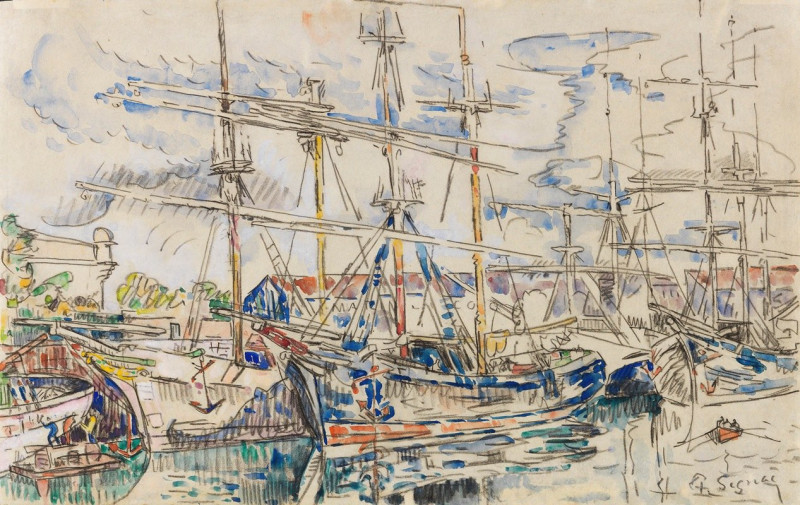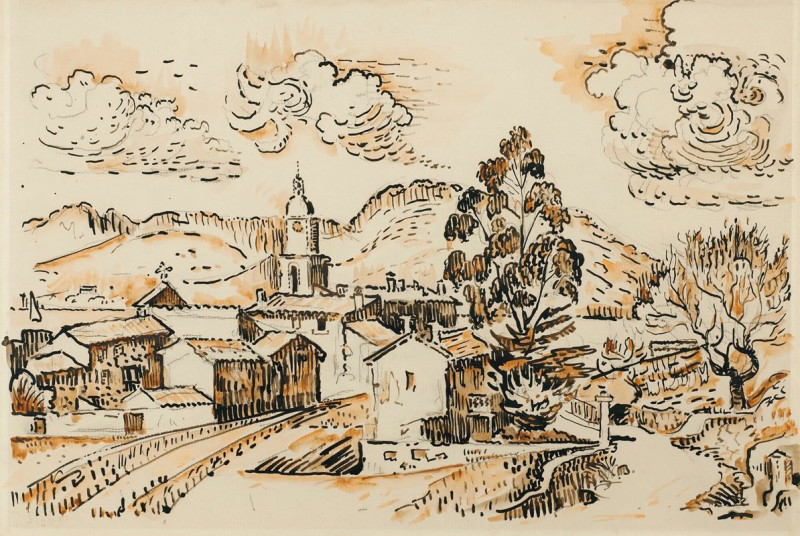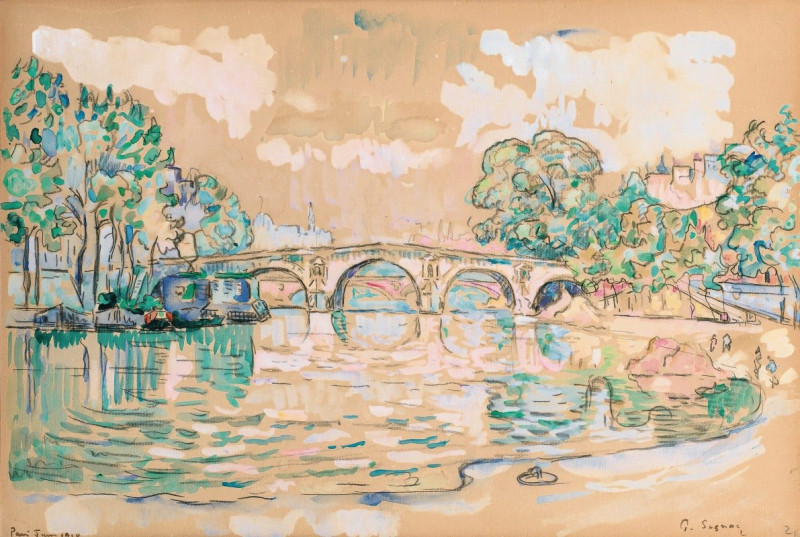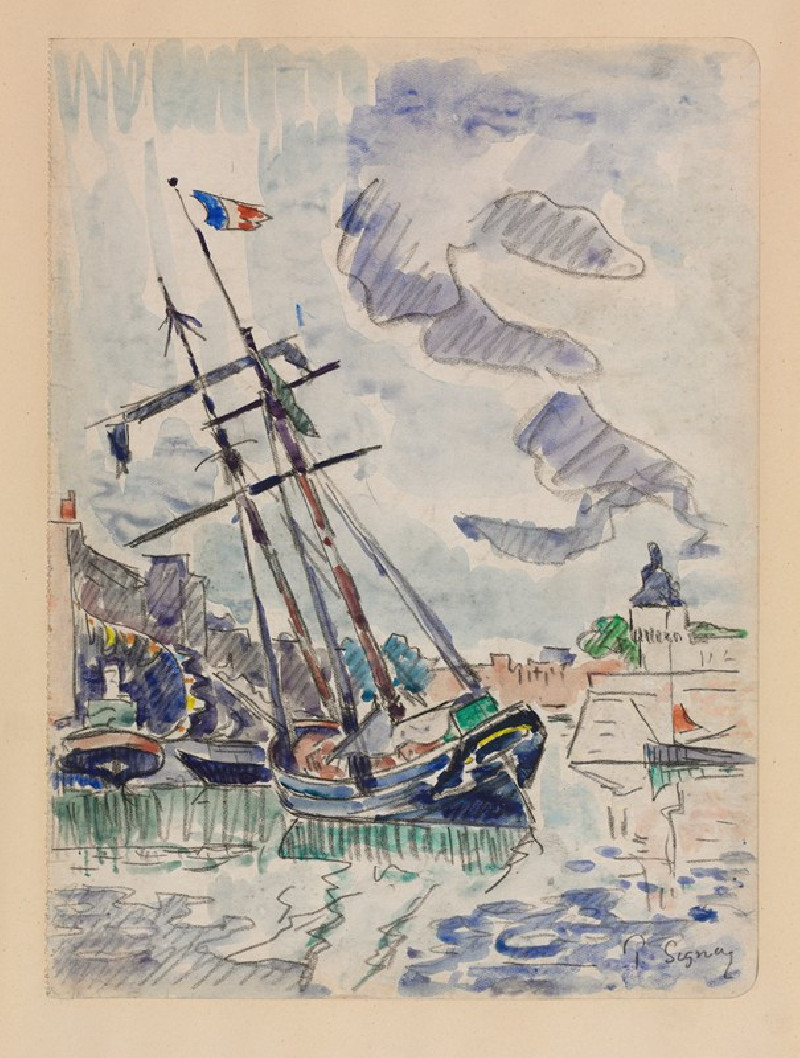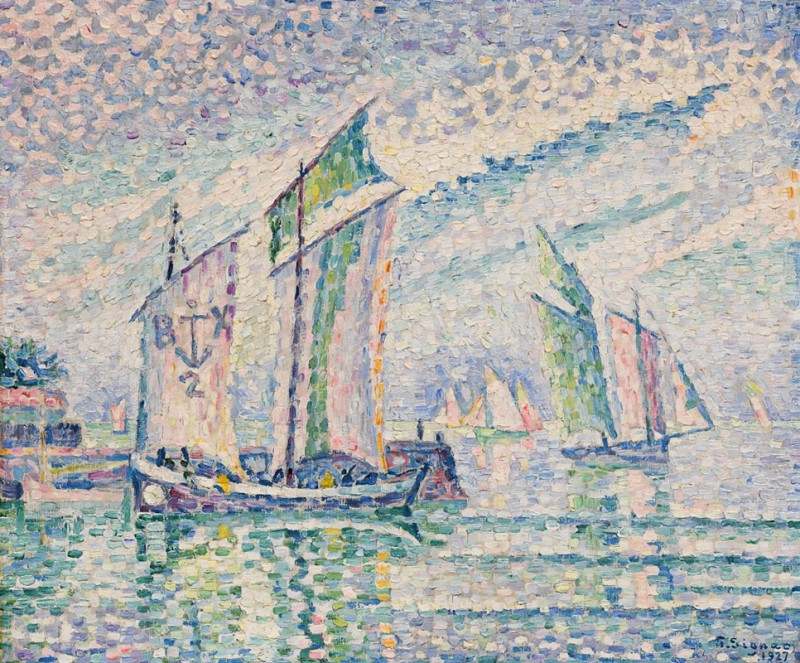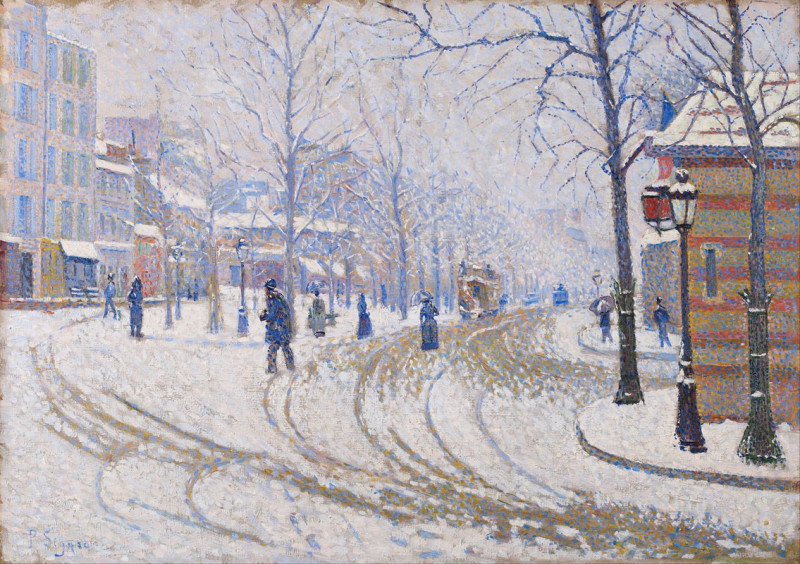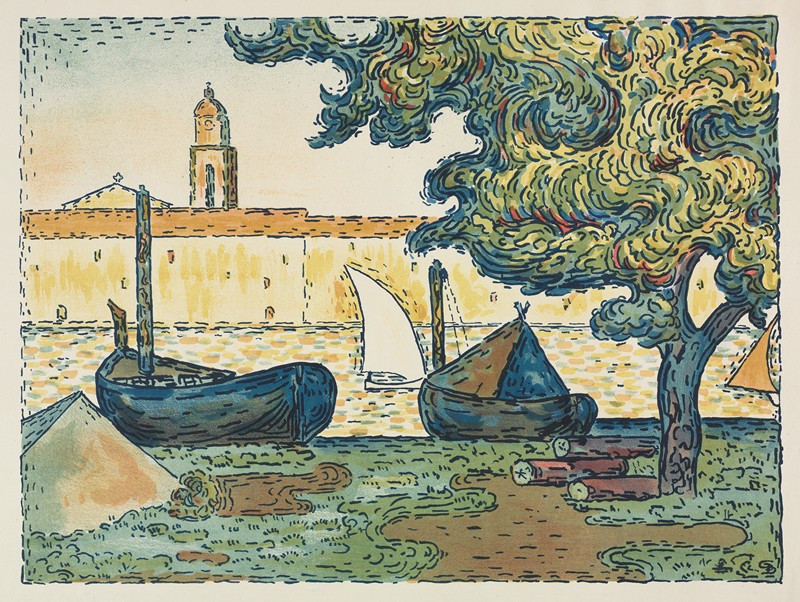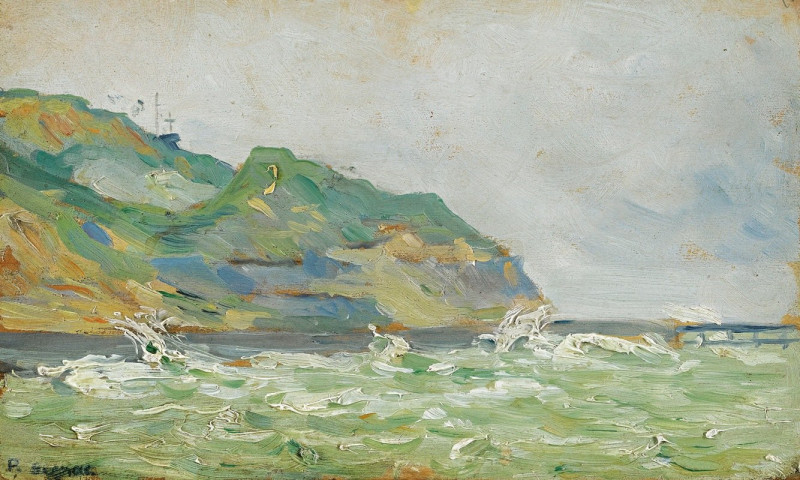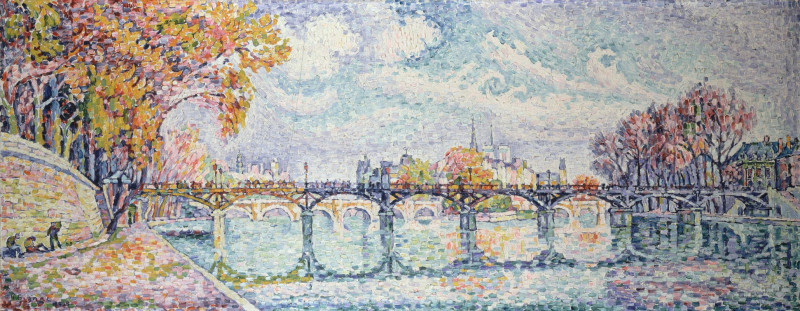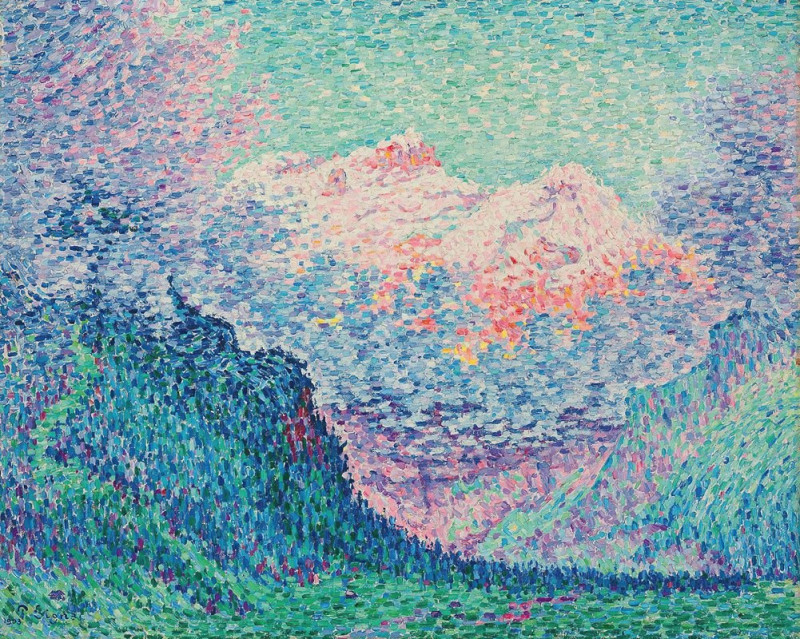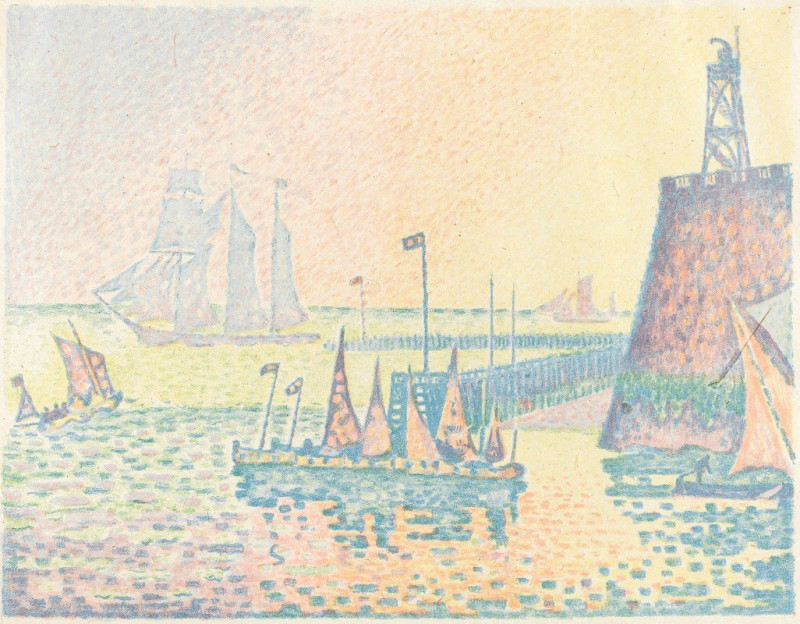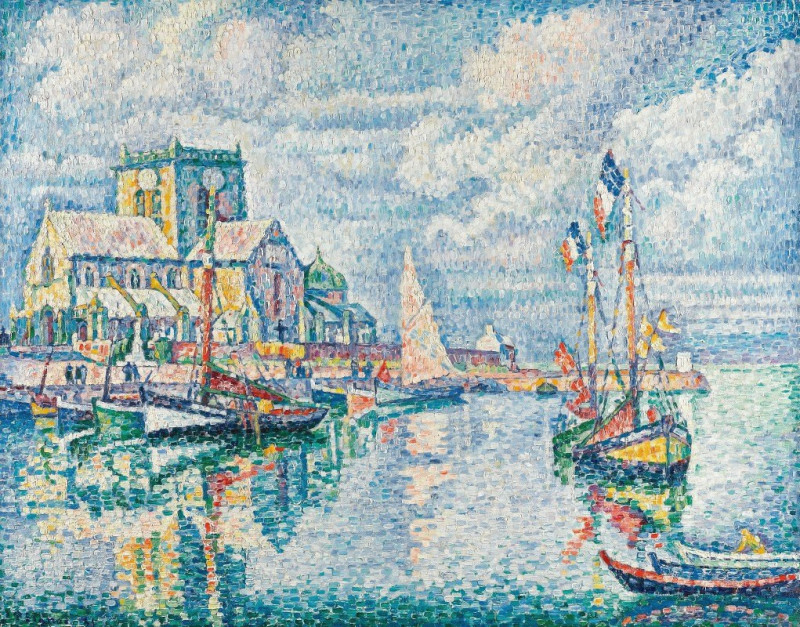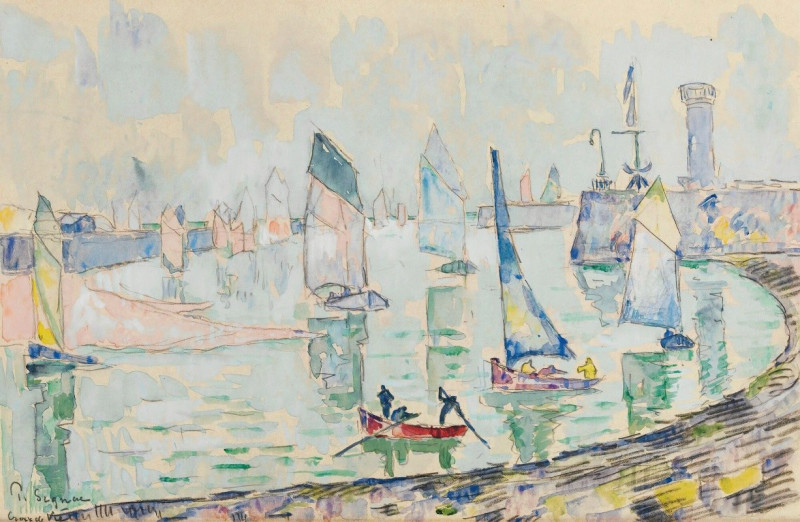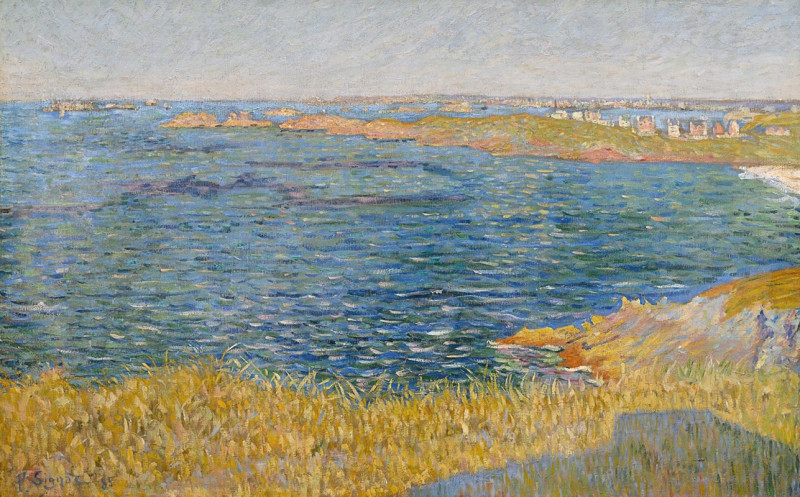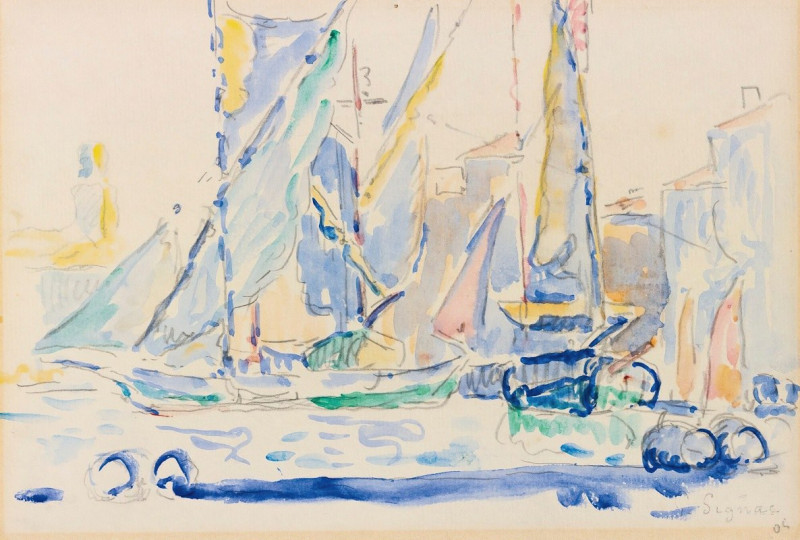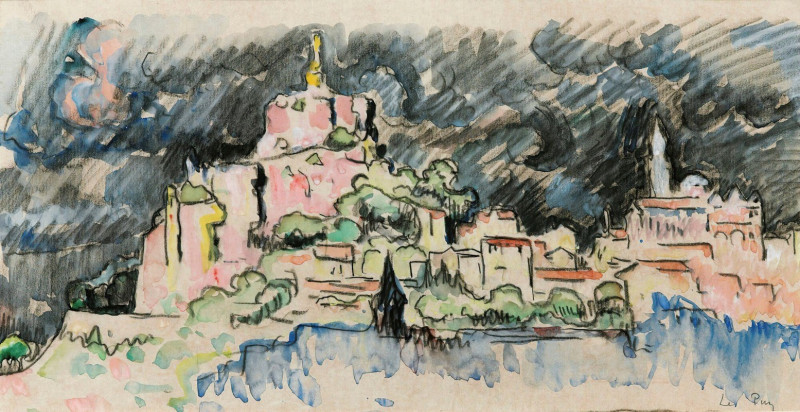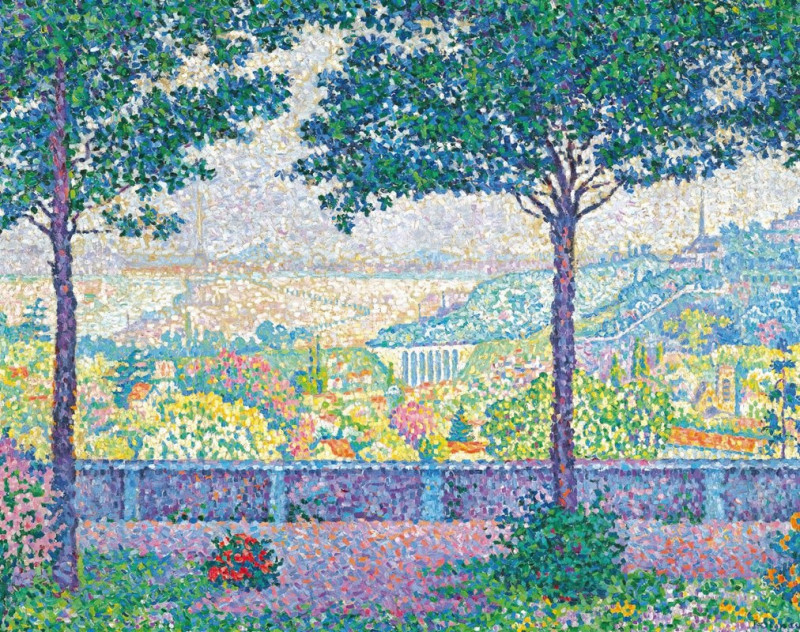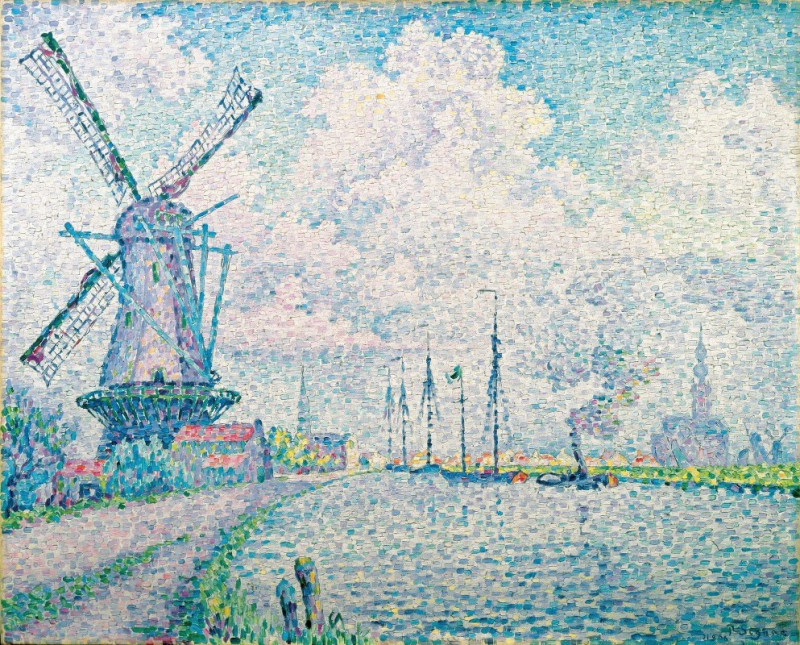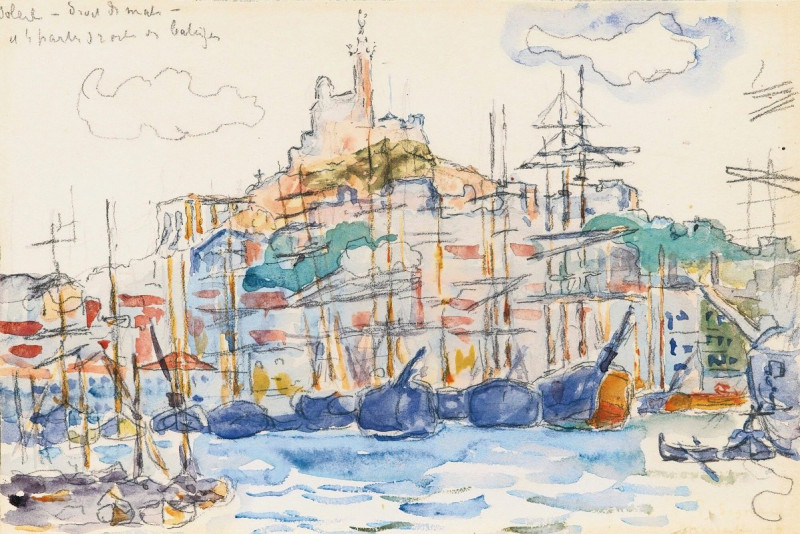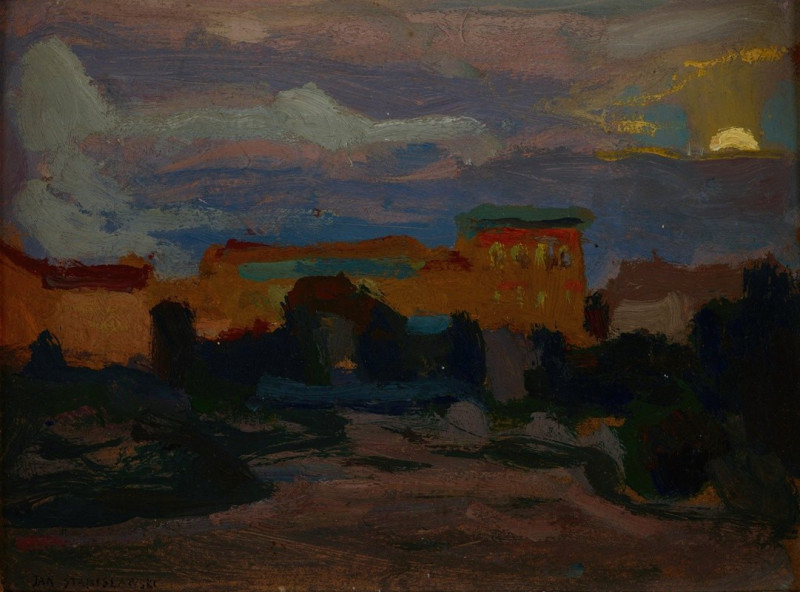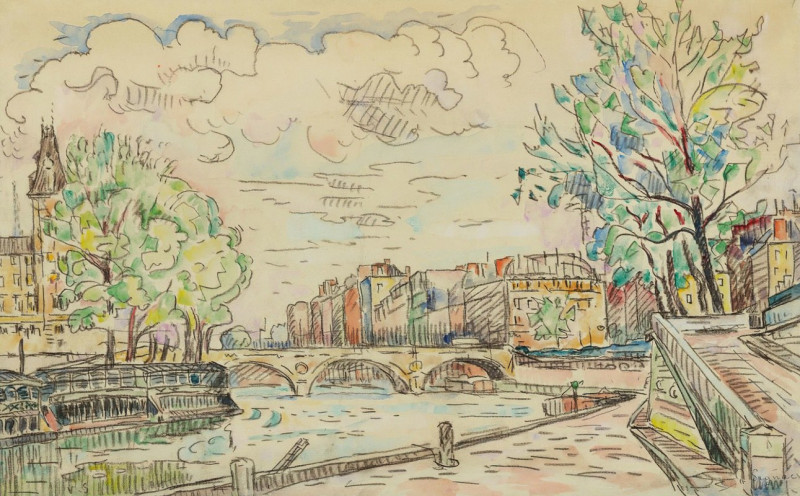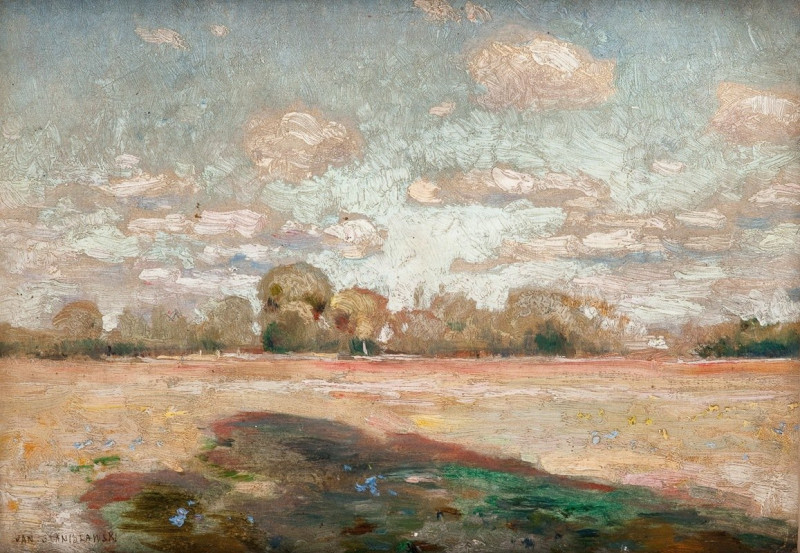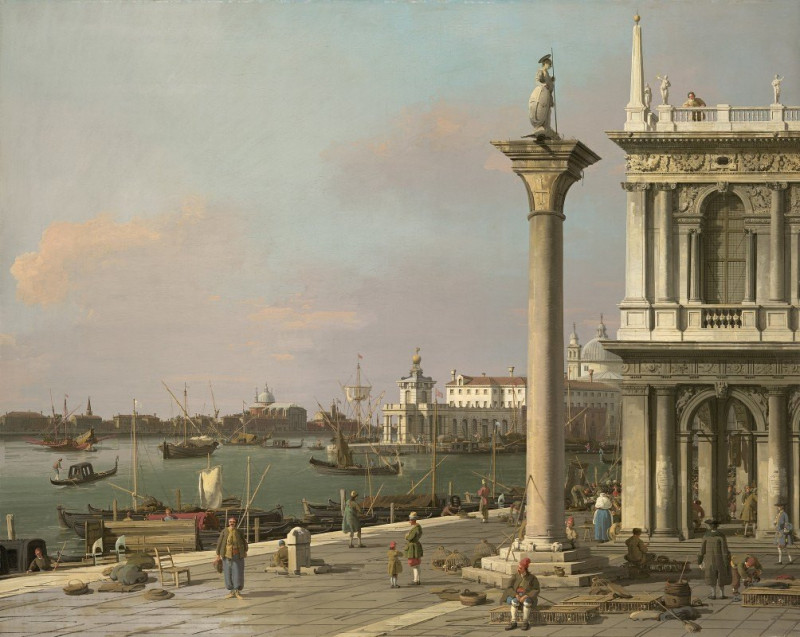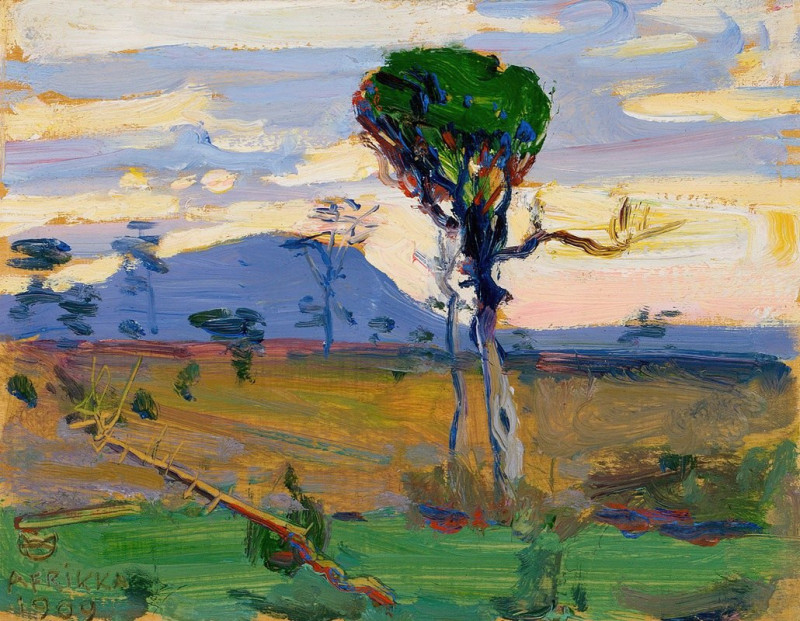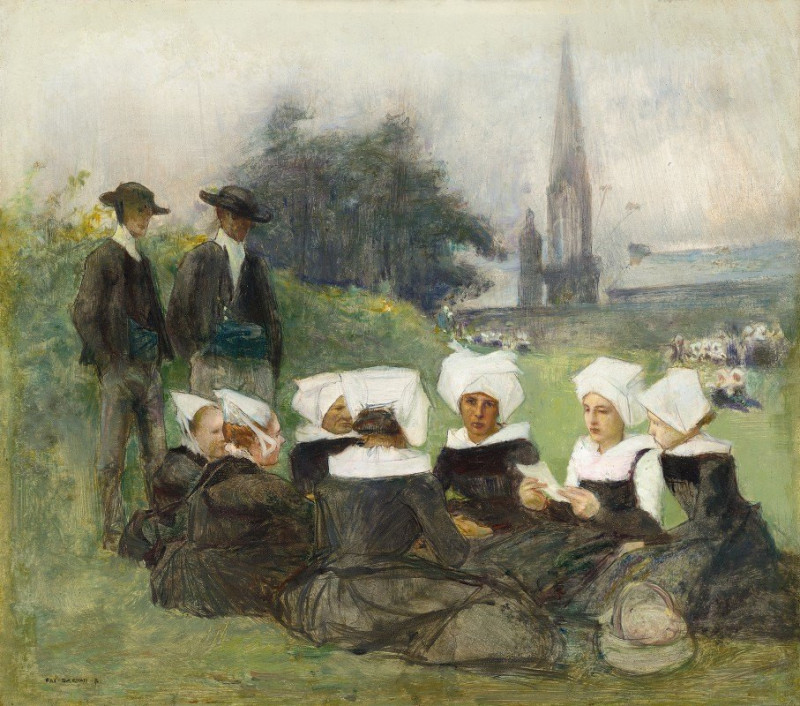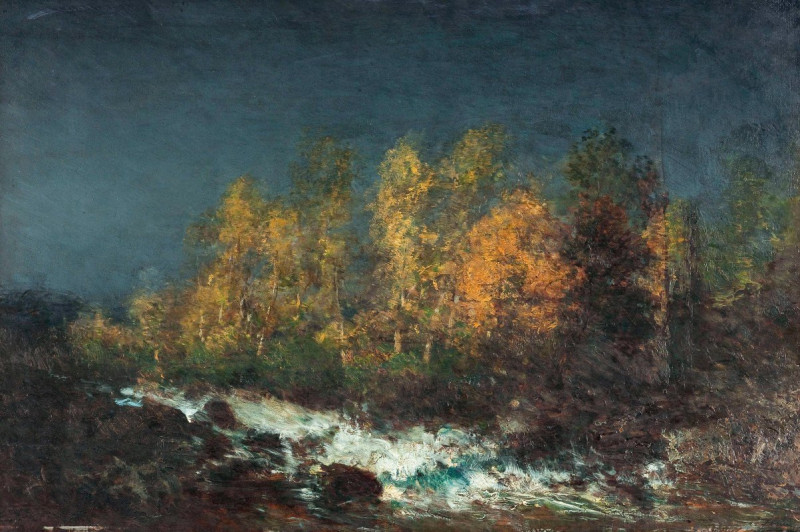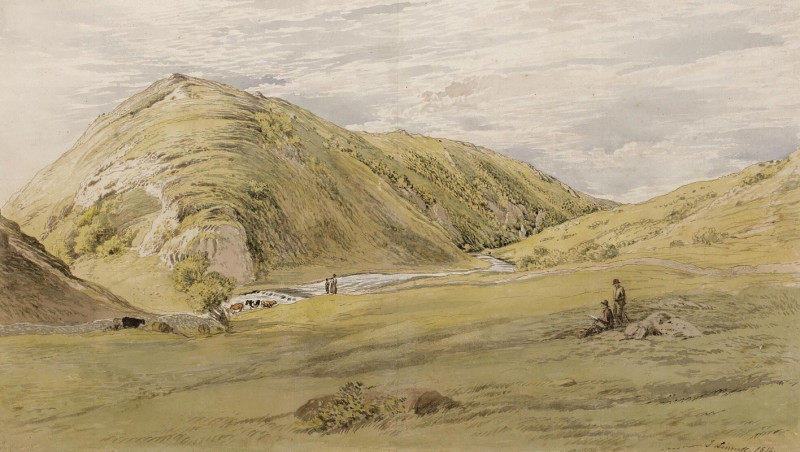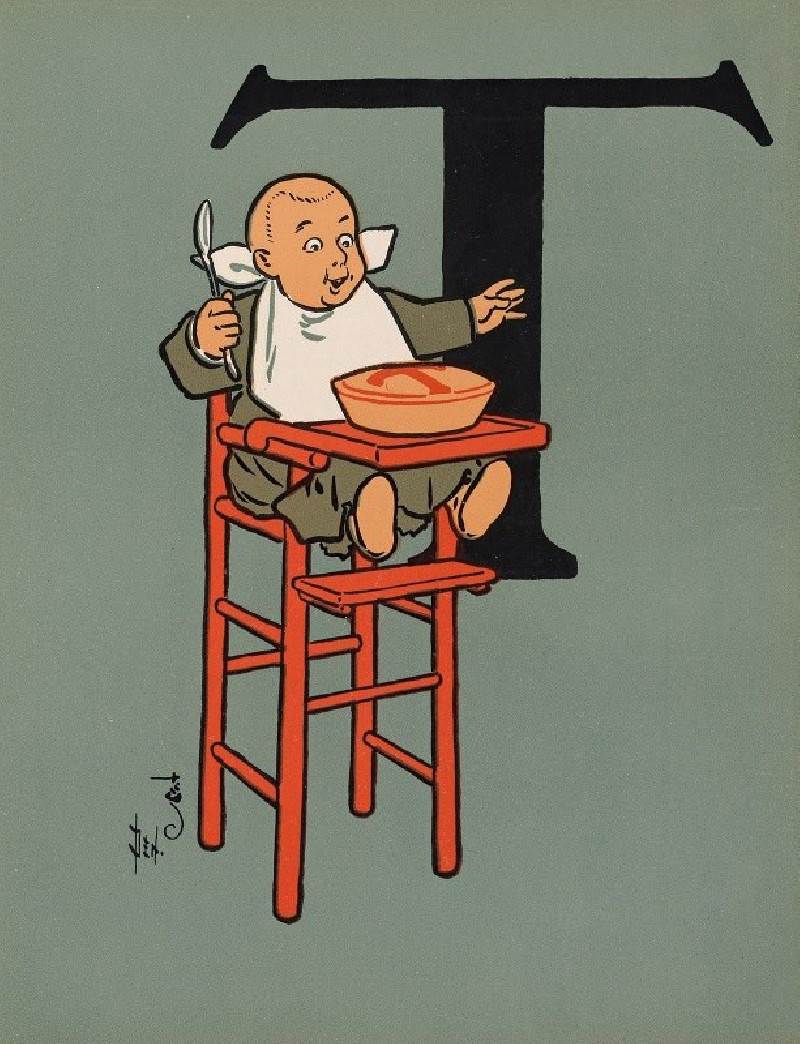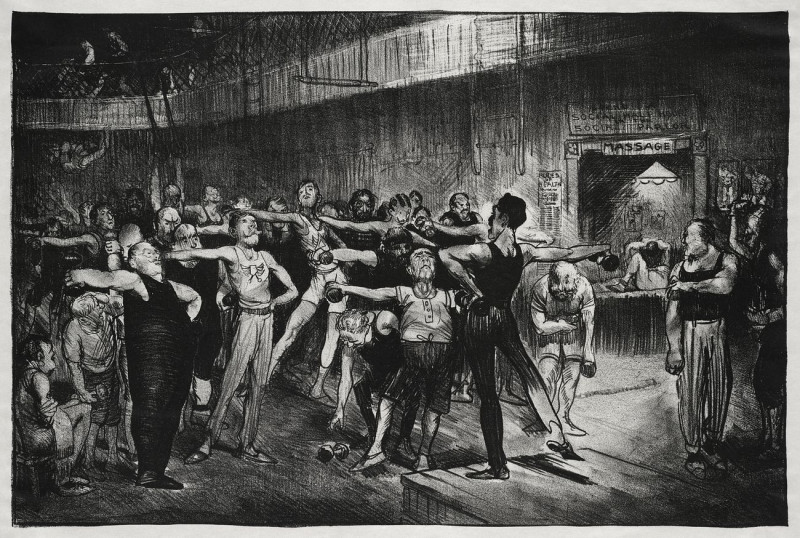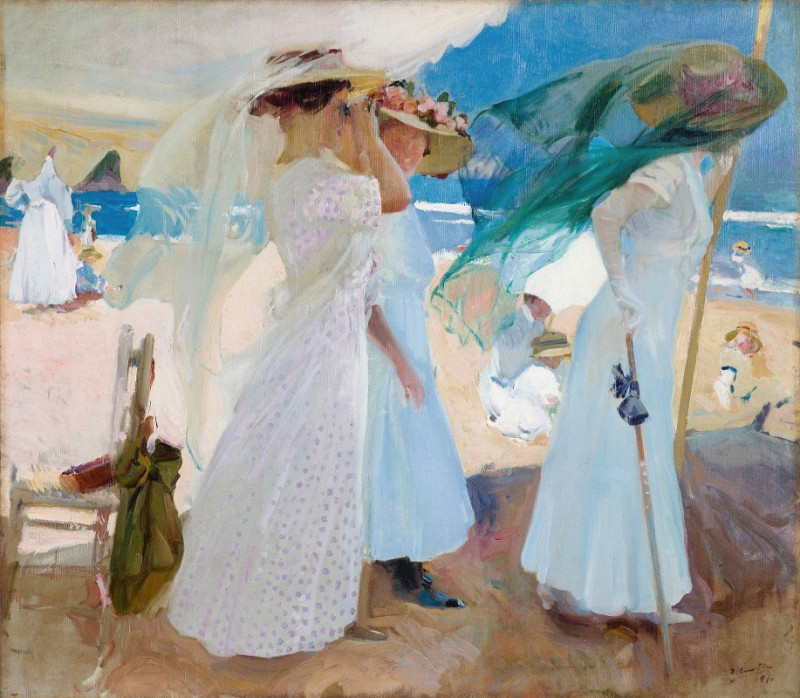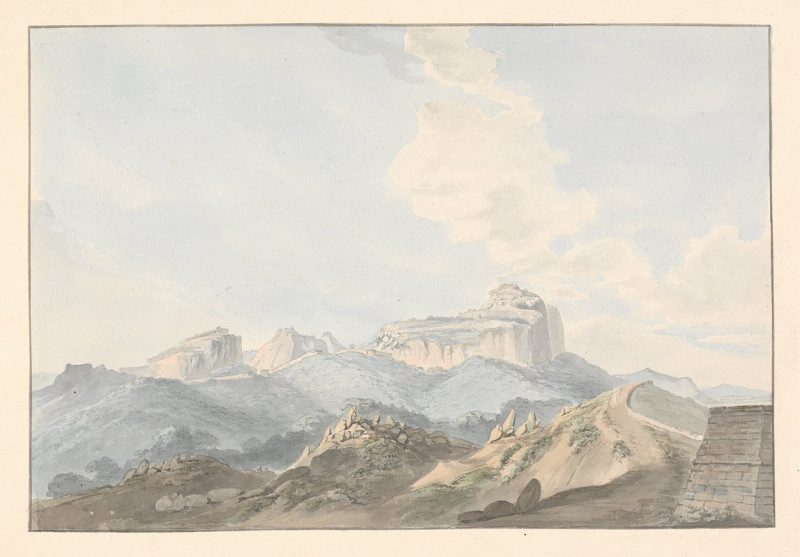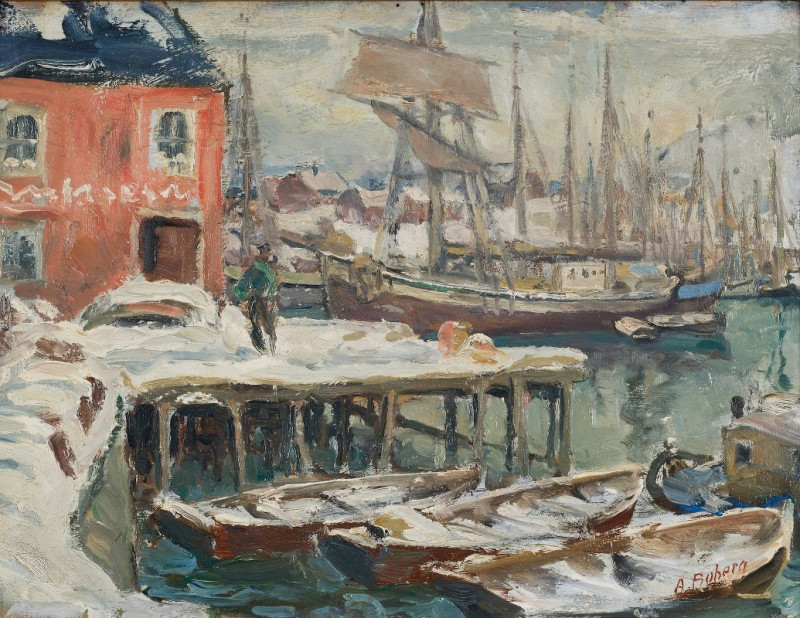Saint-Malo, Les Terre-Neuvas (1928)
Technique: Giclée quality print
Recommended by our customers
More about this artwork
Dive into the bustling maritime life at Saint-Malo with Paul Signac's vibrant watercolor, "Saint-Malo, Les Terre-Neuvas." This painting, created in 1928, captures the essence of the lively port and its importance during the era. Signac, known for his development of Pointillism alongside Georges Seurat, brings a unique sketch-like quality to this watercolor, straying from his typical dot technique to blend vivid hues and fluid lines for a dynamic depiction.At the heart of the composition, a cluster of fishing boats floats gracefully under a sky brushed with soft, swift strokes, suggesting movement and the transient light of a coastal atmosphere. The blues of the sky reflect and merge with the waters below, while splashes of reds, yellows, and whites bring the boats and their flags to life, emphasizing the energy and vibrancy of the port.The scene, likely busy with the activity of fishermen preparing or returning from the sea, highlights the significance of Saint-Malo as a hub for maritime commerce, particularly during the time when the ‘Terre-Neuvas’ fishermen embarked on perilous journeys to the Newfoundland fishing grounds. The loosely defined figures and blurring lines not only evoke the motion of bustling seamen but also capture the transient, fleeting moments of daily life by the docks.This piece is a testament to Signac’s mastery in capturing luminosity and atmosphere, bringing viewers not just a visual image but also the aura and soul of the maritime scene at Saint-Malo during its historic and productive period.
Delivery
Returns
Paul Signac (1863-1935) was a French Neo-Impressionist painter. Together with Georges Seurat, Signac developed the Pointillism style. He was a passionate sailor, bringing back watercolor sketches of ports and nature from his travels, then turning them into large studio canvases with mosaic-like squares of color. He abandoned the short brushstrokes and intuitive dabs of color of the impressionists for a more exact scientific approach to applying dots with the intention to combine and blend not on the canvas, but in the viewer's eye.

